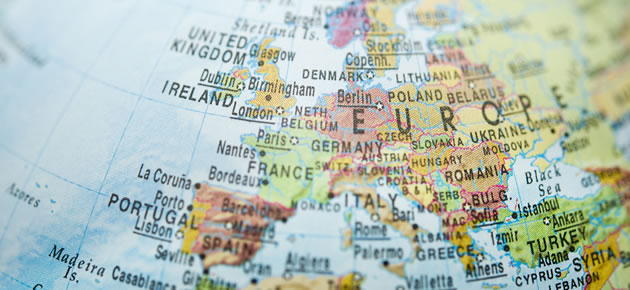After the Reserve Bank of Australia restated its commitment to leaving interest rates at record lows for the foreseeable future the Australian Dollar tumbled against peers like the Euro.
The Euro to AUD pairing held its overnight gains throughout European trading on Tuesday despite a report showing a surprise decline in German producer prices.
Minutes from the RBA’s latest policy meeting highlighted the slack in Australia’s labour market and intimated that a period of slower economic growth can be expected.
Their dovish tone sent the ‘Aussie’ spiralling, and the currency hasn’t recovered a firm footing since.
Overnight the Australian Dollar’s bearish relationship with the Euro continued as the Westpac measure of consumer confidence dropped from 99.7 in April to 92.9 in May.
The 6.8 per cent drop in Australian sentiment wiped out the previous month’s 0.3 per cent gain.
A separate Australian report showed a 0.2 per cent decline in skilled vacancies in April, month-on-month.
Meanwhile, the nation’s wage cost index advanced by 0.7 per cent in the first three months of the year, quarter-on-quarter.
The ‘Aussie’ was also dragged lower against its currency counterparts by a slide in the price of iron ore, one of Australia’s major commodities.
According to strategist Hamish Pepper; ‘The relationship may be reasserting itself between the Australian Dollar and commodity prices. If we look at Australia’s commodity prices overall on a trade-weighted basis, they’ve been pretty weak this year.’
While the Euro to Australian Dollar exchange rate was little changed on Wednesday following the release of the Eurozone’s current account data, today’s consumer confidence report for the 18-nation currency bloc could have a notable impact before the close of European trading.
The report showed that the Eurozone’s non-seasonally adjusted current account came in at 20.9 billion Euros in March, up from a negatively revised 13.8 billion Euros in February.
On a seasonally adjusted basis, the region posted a current account of 18.8 billion Euros, down from 21.8 billion Euros in February.
Economists are expecting the Eurozone’s measure of consumer confidence to have declined by 8.6 in May.
If that proves to be the case the common currency may trim its gains against the Australian Dollar.
Tomorrow’s Australian consumer inflation expectation report and China’s HSBC manufacturing PMI could influence movement in the EUR/AUD pairing before the weekend.
Euro to Australian Dollar Update – 22/05/14
After struggling all week the ‘Aussie’ was finally able to make some inroads on Thursday and recouped losses against the Euro.
The Australian Dollar strengthened against several of its major currency counterparts as a measure of manufacturing in China, Australia’s main trading partner, showed unexpected improvement.
While the HSBC manufacturing PMI gauge remained below the 50 mark separating growth from contraction in May, it advanced from 48.1 to 49.7 – a far stronger increase than the gain to 48.3 expected.
After the report was published the Australian Dollar advanced on several of its peers. It’s gains against the ‘Greenback’ were aided by the Federal Open Market Committee meeting minutes.
As expected by economists, the minutes had dovish overtones and intimated that interest rates would remain on hold for some time to come.
Although the ‘Aussie’ moved away from its recent three-week low against the US Dollar, the currency was still feeling the pressure following this week’s less-than-impressive Australian Westpac consumer confidence report.
The 6.8 per cent decline in sentiment reflected downbeat attitudes to the national budget.
According to industry expert Kathy Lien; ‘Weaker domestic factors kept pressure on the commodity dollars with the Australian Dollar hit by a surprisingly large decline in consumer confidence. Even though the Australian government has gone to great lengths to prepare the market for fiscal tightening, consumers were nonetheless dissatisfied by the recent announcements and worried about the impact on the economy’.
However, while domestic concerns might have restrained the Australian Dollar’s advance overnight, the Euro to AUD exchange rate extended declines during the European session.
The ‘Aussie’ was able to romp higher against the Euro following the publication of a mixed bag of economic reports for the Eurozone.
Markit PMI revealed that the French manufacturing and service sectors unexpectedly contracted in May while the pace of manufacturing output in Germany and the Eurozone as a whole slowed by considerably more than expected.
Later today a stream of influential US economic reports could have an impact on currency market movement.
Euro (EUR) Exchange Rates
[table width=”100%” colwidth=”50|50|50|50|50″ colalign=”left|left|left|left|left”]
Currency, ,Currency,Rate ,
Euro, ,US Dollar,1.3665,
,US Dollar,1.3665,
Euro, ,British Pound,0.8090,
,British Pound,0.8090,
Euro, ,Australian Dollar,1.4773,
,Australian Dollar,1.4773,
Euro, ,New Zealand Dollar,1.5935,
,New Zealand Dollar,1.5935,
Euro, ,Canadian Dollar,1.4919,
,Canadian Dollar,1.4919,
[/table]



